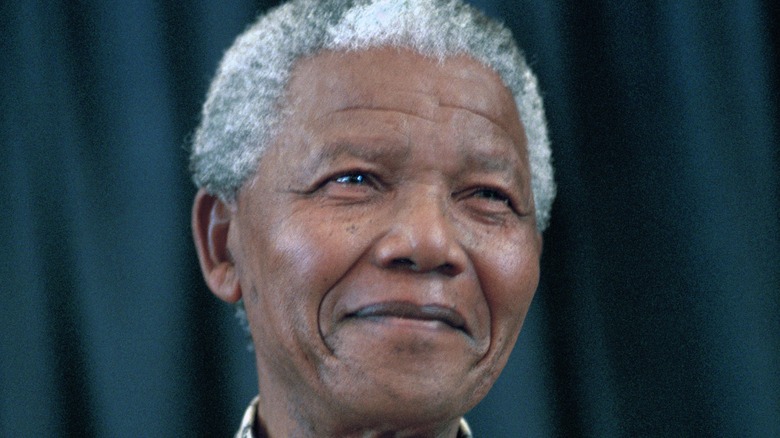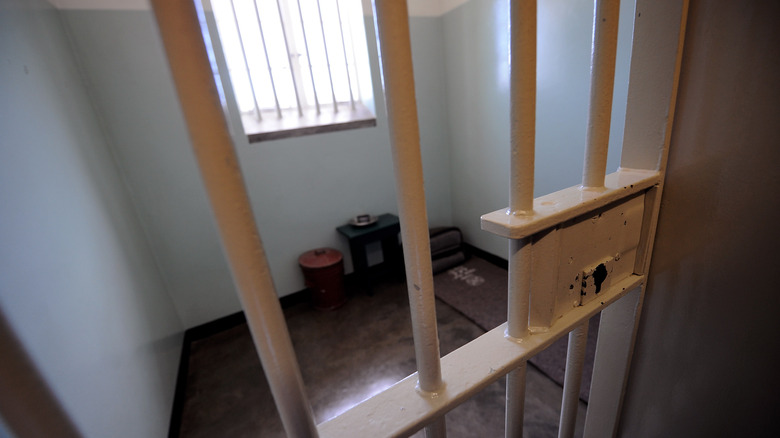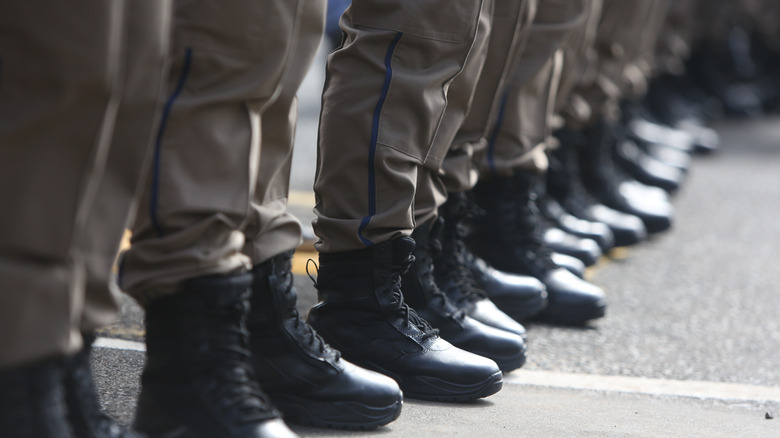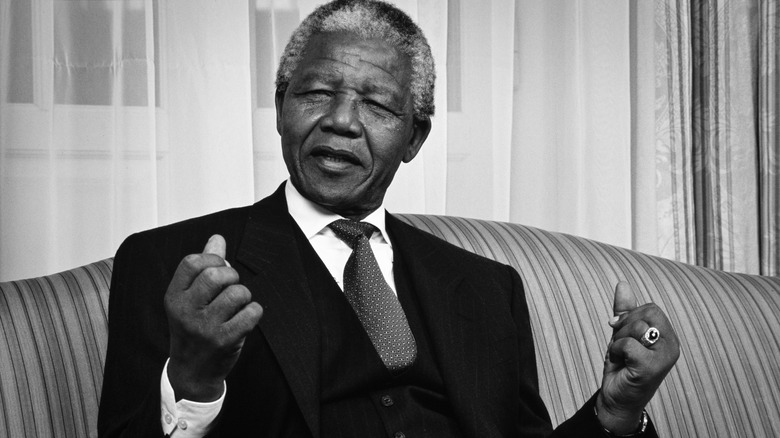The Free Mandela Movement Was Launched By The Silverton Siege
The story of the Silverton Siege has gotten the Netflix treatment in a film, aptly titled "Silverton Siege." The film's director, Mandla Dube, described the film as the strongest work of his career, according to Variety, adding that he hopes the film opens doors to more African filmmakers. "I also hope that the youth of today can draw inspiration from the Silverton Siege trio, and know that they have the power to change the status quo, and most importantly that their stories matter," Dube added.
The film is based on a real event that happened in 1980 when three members of UMkhonto weSizwe, or MK, a group started by future South African leader Nelson Mandela, took several hostages at a bank in Pretoria, per South African History Online. The negotiations to release the hostages allowed the MK cadres as they're known, to make demands that are credited with being the catalyst for the Free Mandela movement. That movement not only led to the prison release of their leader Nelson Mandela but also fundamentally changed the nation of South Africa after years of Apartheid policies, via History.
Before the Silverton Siege
Nelson Mandela wrote a series of statements and letters while sitting in a tiny cell at the notorious Robben Island prison. Those who visited him smuggled them out of the prison and distributed his messages to supporters of MK. Mandela had been imprisoned in 1963 after having organized acts of sabotage aimed at South Africa's government, which was run by the nation's white minority (via History).
It's alleged that on January 25, 1980, three MK cadres named Stephen Mafoko, Humphrey Makhubo, and Wilfred Madela were on their way to sabotage an oil depot. This was part of an MK mission in and around Pretoria, the administrative capital of South Africa. However, on their way to the oil depot, the three men realized that they were being followed by police. They decided to call an audible and head toward a branch of Volkskas Bank, one of the country's major banks, per South African History Online.
The siege begins
Sometime between noon and 1:30 p.m. they entered the bank. Mafoko, Makhubo, and Madela quickly took 25 people hostage and moved them into a cubicle. Meanwhile, as the hostage situation unfolded on the building's ground floor, people upstairs were able to escape, but Andre Theron, an accountant who worked for Volkskas Bank stayed inside the building.
According to South African History Online, authorities arrived including the Police Anti-Terrorist Unit, who set up a surveillance center in another nearby building which they had outfitted with a periscope and a microphone. This allowed them to see and hear what was happening inside the bank, which included hearing the three men singing songs about freedom to keep their spirits up during such a stressful situation. Negotiations began with the three hostage-takers, who sent a pair of hostages out to negotiators, each of them carrying notes that outlined their demands. These included Nelson Mandela's release, a meeting with the South African president, cash, and an airplane that they could use to flee to Mozambique.
The siege comes to an end
Police entered the building through the basement where they used a stairwell to reach Theron and ushered him out of the building. After a nearly six-hour stand-off, police decided it was time to make a move that would bring the situation to a close. Police Commissioner-General Mike Geldenhuys ordered the area around the bank be cleared of unnecessary personnel — including a crowd of people that had gathered to watch the siege in real-time — a tacit admission that something was about to happen. Further hammering this home was that ambulances were an exception to this order and moved closer to the scene, according to South African History Online.
A little after 7:00 that evening, the first gunshots were reported, but to this day it remains unclear whether Stephen Mafoko fired the first shot or if the first shot came from a police-issued weapon. Mafoko's fellow MK cadres Humphrey Makhubo and Wilfred Madela were killed soon after the shooting began, however, Mofoko continued returning fire. During the gunfire exchange, Mafoko threw a grenade, which was picked up by one of the hostages who tried to throw it away. However, it exploded and injured some hostages. Mafoko was then killed by a police bullet as well, at which point the Silverton Siege was over, with two hostages and all three MK members dead.
A movement begins
At the time, newspapers reported the siege as an act of Black terrorism, however, in an interview with Netflix, "Silverton Siege" director Mandla Dube, recalled a conversation he had with one of the hostages from that day in 1980. She told him that at a certain point during the hostage situation she realized that the three men weren't trying to take their country away from them, as was the typical White narrative at the time, but instead they were part of a movement that fought for the freedom of all South Africans, regardless of race.
Dube also noted that the Silverton Siege is widely credited with being the moment that started the Free Mandela movement. According to History, around 10 years after the Silverton Siege, Mandela was released from prison and went on to become the President of South Africa. The spur-of-the-moment decision the three men made was condemned at the time, but now, it's looked back upon as a major turning point in South African history.




